This next reader request comes from one of my more active mates on Twitter, Syn, aka @AliasScarecrow:
@ChasingASMBlog @KurtBusiek issue 21 Spidey meets the X-Men… :)— Syn (@AliasScarecrow) October 25, 2013
I’m yet to write about any of the Untold Tales of Spider-Man issues from the 90s, so per Syn’s request, let’s take a look at this Spider-Man/original X-Men team-up.
For a full archive of my Reader Request Month entries, click here.
***
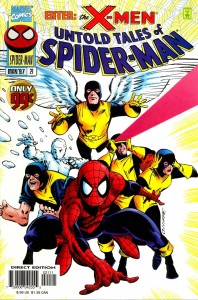 In terms of my Spider-Man “blind spots,” the entire run of Untold Tales of Spider-Man is near the top of my list of Spidey comics I know I’ve neglected and need to read. Kurt Busiek is one of my favorite comic book writers who has never gotten a real run on Spider-Man, outside of this series, which was released in the aftermath of the “Clone Saga” when I had given up on reading all comic books, Spidey or otherwise. But beyond my adoration for Busiek, I think the concept for the Untold Tales line is a lot of fun and something we’re sorta, kinda seeing from Marvel right now with its slew of Amazing Spider-Man point one issues dropping in December. The fact that the “untold” tales all took place during designated points of Spidey’s Silver Age run was a clever way for Marvel to retcon a number of events, including interactions with heroes and villains that were otherwise neglected, ignored or forgotten about during the Stan Lee/Steve Ditko/John Romita Sr. days.
In terms of my Spider-Man “blind spots,” the entire run of Untold Tales of Spider-Man is near the top of my list of Spidey comics I know I’ve neglected and need to read. Kurt Busiek is one of my favorite comic book writers who has never gotten a real run on Spider-Man, outside of this series, which was released in the aftermath of the “Clone Saga” when I had given up on reading all comic books, Spidey or otherwise. But beyond my adoration for Busiek, I think the concept for the Untold Tales line is a lot of fun and something we’re sorta, kinda seeing from Marvel right now with its slew of Amazing Spider-Man point one issues dropping in December. The fact that the “untold” tales all took place during designated points of Spidey’s Silver Age run was a clever way for Marvel to retcon a number of events, including interactions with heroes and villains that were otherwise neglected, ignored or forgotten about during the Stan Lee/Steve Ditko/John Romita Sr. days.
Syn’s choice of Untold Tales #21 is a prime example of how Untold Tales can be so effective. Set immediately following the events of ASM #17, this issue marks the first official interaction between Spider-Man and the original Uncanny X-Men lineup of Cyclops, Jean Grey, Iceman, Beast and Angel. Overall, it’s a fun little story that does a fantastic job echoing the visual and tonal style of the Lee/Dikto ASM run. In fact, the story feels like such a natural part of the Silver Age ASM continuity, it raises some interesting questions from me regarding the “House of Ideas” during the mid-1960s. The biggest one being, how does Stan Lee – the master of cross promoting his titles – fail to bring together Spider-Man and the X-Men during this era?
This comic demonstrates how these characters are absolutely made for each other. While Spider-Man and Human Torch form an excellent teenaged odd couple, that entire dynamic was predicated on petty bickering and jealousy, a la Archie and Reggie. But Spider-Man and Lee and Jack Kirby’s original line-up of teenaged mutants could have had a real emotional connection to each other, leading to sincere, heartfelt stories that would have resonated with fans of each respective series. Beyond the storytelling potential, Uncanny X-Men was not a successful property for Marvel financially until some guy named Wolverine and some other heroes that nobody cares about, took the world by storm and made the X-Men into the billion-dollar franchise it is today. If Lee put as much effort into teaming Spider-Man with the X-Men as he did with Human Torch, perhaps the title wouldn’t have been on the verge of extinction until the mother of all lifelines arrived in the mid-1970s.
My exasperation by this missed opportunity is not only about the fact that both Spidey and the X-Men are teenaged outcasts who inspire fear from their peers despite their heroic actions (though that’s certainly a critical factor in my thinking). In Busiek’s story, Spider-Man recognizes how much they have in common pretty quickly when he arrives at a crime scene and he tells the X-Men that he’ll trust their word over anything the Daily Bugle has published based on his own personal experience with a certain anti-hero publisher/editor-in-chief. But beyond the “the public thinks they’re all menaces” angle, there are some more subtle things that make Spidey and the X-Men a natural team-up.
The original X-Men presented a good mix of personalities that are on display in Untold Tales #21, creating a really interesting dynamic with Spider-Man, especially if they had been given additional stories to gel with each other. You have the stoic leadership of Scott Summers, the snarky brilliance of Hank McCoy and the brashness/egotism of Warren Worthington and Bobby Drake (Warren’s aloofness stems more from wealth, while Bobby’s comes from a place of immaturity). All of these archetypes have been proven to play off Spidey’s personality well, especially during the 1960s. I would have been especially intrigued by some more interactions between Beast and Iceman (beyond this team-up story I wrote about in September).
And then there’s Jean, a character that REALLY could have been used in interesting ways in the Spider-Man universe. While I hate to relegate every female character as a potential love interest, especially when Jean was all but betrothed to Scott during the first 15-20 years of X-Men comics, but giving Spider-Man/Peter a teenaged female with superpowers to flirt with and pine over could have marked a fun transition into the more soap opera-esque stories once John Romita jumped on the book (as discussed in yesterday’s post).
I really haven’t talked much about Ultimate Spider-Man since I sat down and read the entire run this past summer, but after initially feeling annoyed with how writer Brian Michael Bendis broke up Peter and MJ in favor of Peter and the X-Men’s Kitty Pryde, I’ve come around on the plotline as something that was generally a positive for the series. The reason why Kitty/Peter works for me is because I totally buy into the idea that a teenaged Peter who is still coming to grips with the fact that he’s suddenly inherited superpowers would be romantically interested to a super-powered female who is both confident in who she is, and capable of taking care of herself. Perhaps in Silver Age Spidey, Peter and Jean could have had something similar.
For the record, Busiek doesn’t even make the slightest hint that these two should pair off (though he does write the most sympathetic Liz Allen I’ve ever read), and perhaps me speculating like this about a late-90s retcon of 60s continuity is defeating the purpose of the “just for fun” premise of the Untold Tales series. That’s part of the reason why after finally checking out this comic, plus a few more of these stories, my ultimate conclusion on Untold Tales is while these are great reads, the series shouldn’t be labeled as “essential” material for Spider-Man fans. These comics neither enhance, nor detract from my general understanding and appreciation of the Spider-Man universe. They’re just fun, one-and-done stories that are absolutely worth your time – especially considering the dearth of quality in the “contemporary” Spider-Man comics that were being published in the late-1990s.
All images from Untold Tales of Spider-Man #21: Kurt Busiek, Pat Olliffe & Al Williamson

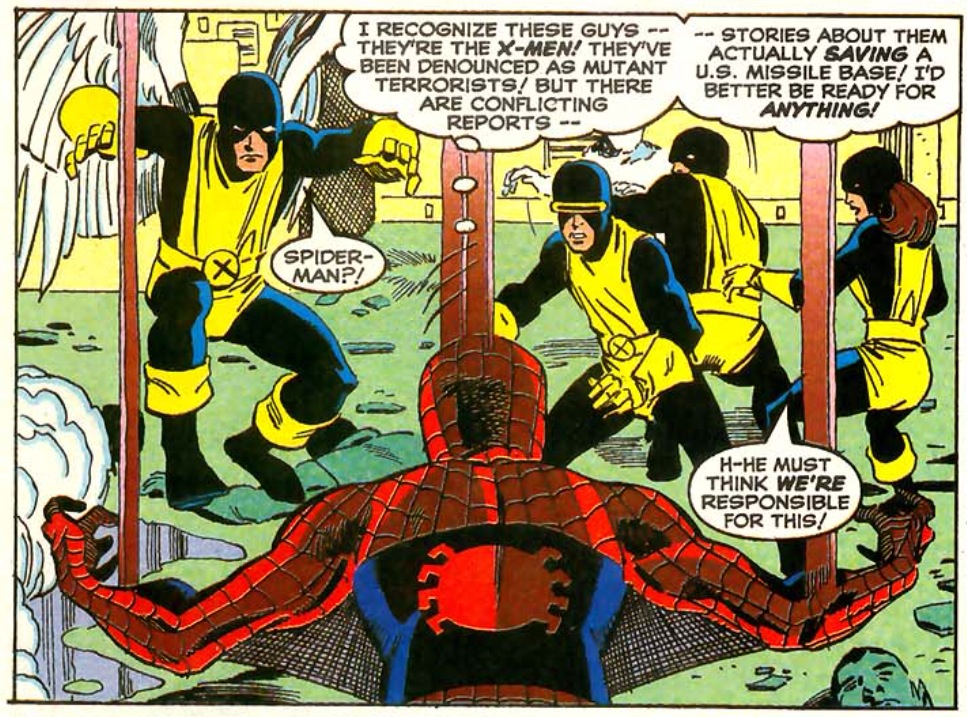
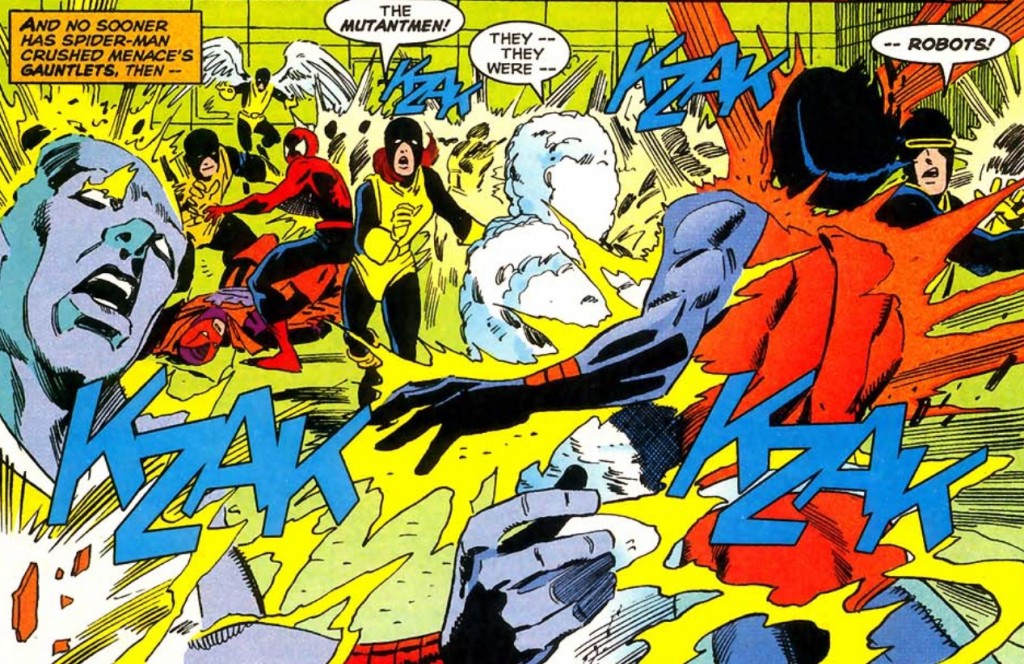
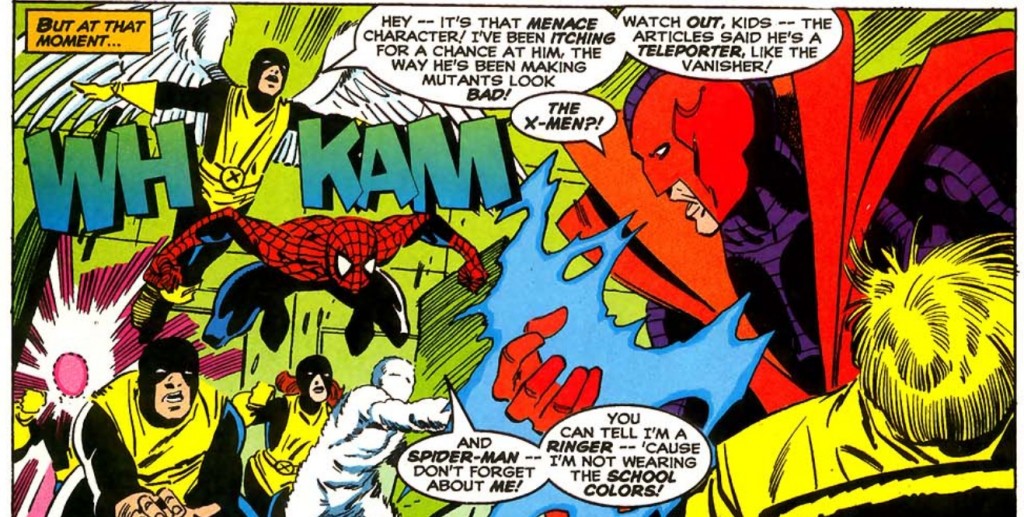
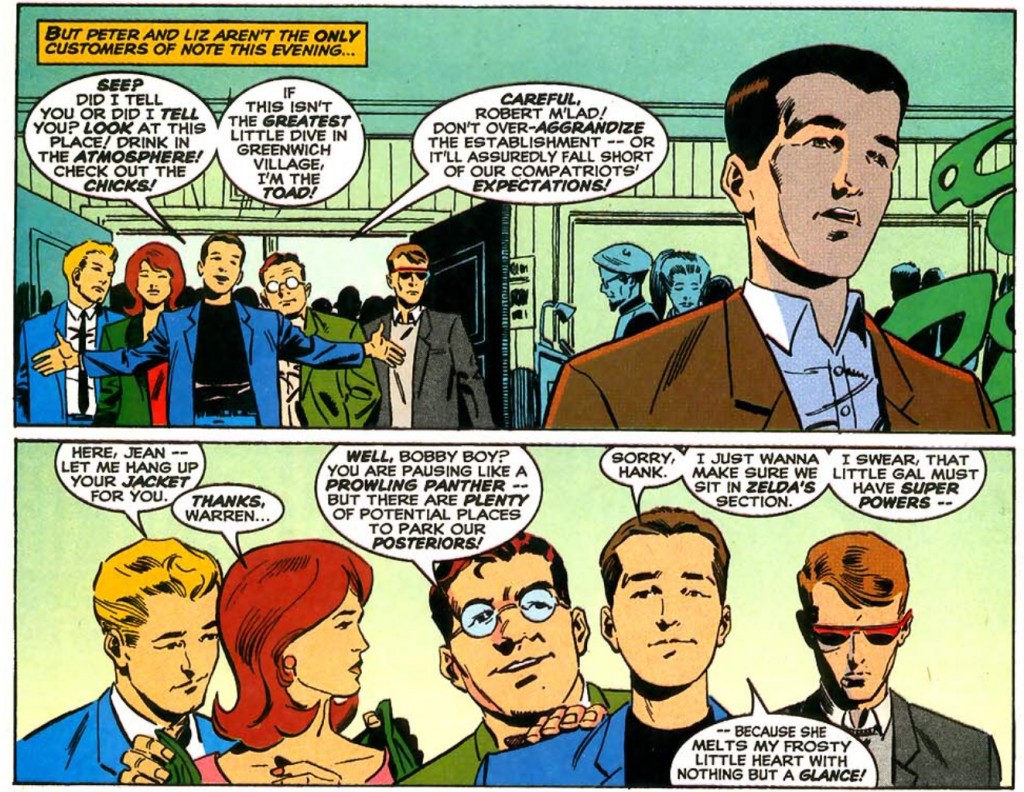

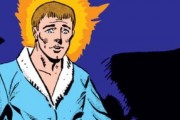
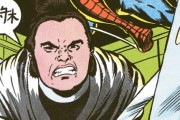

One possibility for the limited interaction back at the time, although this is just a guess, is that Stan Lee only wrote the first nineteen issues of X-Men and for a good chunk of that period, Steve Ditko was plotting Amazing Spider-Man. The Fantastic Four relationship is set down at the start but otherwise the guest appearances during Ditko’s run tend to be limited to characters Ditko was working on around the same time – the Hulk, Dr Strange and Daredevil. Each may have wanted to avoid too much use of characters someone else was handling.
Spider-Man did pop up a couple of times in the original X-Men run – in issue #27 the Beast and Iceman offer him membership but he declines having gone through that mess with the Avengers, and in issue #35 there’s a substantial guest appearance and fight written by Roy Thomas, the first full Spider-Man appearance to be written by anyone other than Lee. Oddly Spider-Man refuses to give the X-Men the benefit of the doubt and let them apologise and explain why they attacked him.
You are unquestionably the continuity/history expert on this site. Thanks again for the insights Tim!